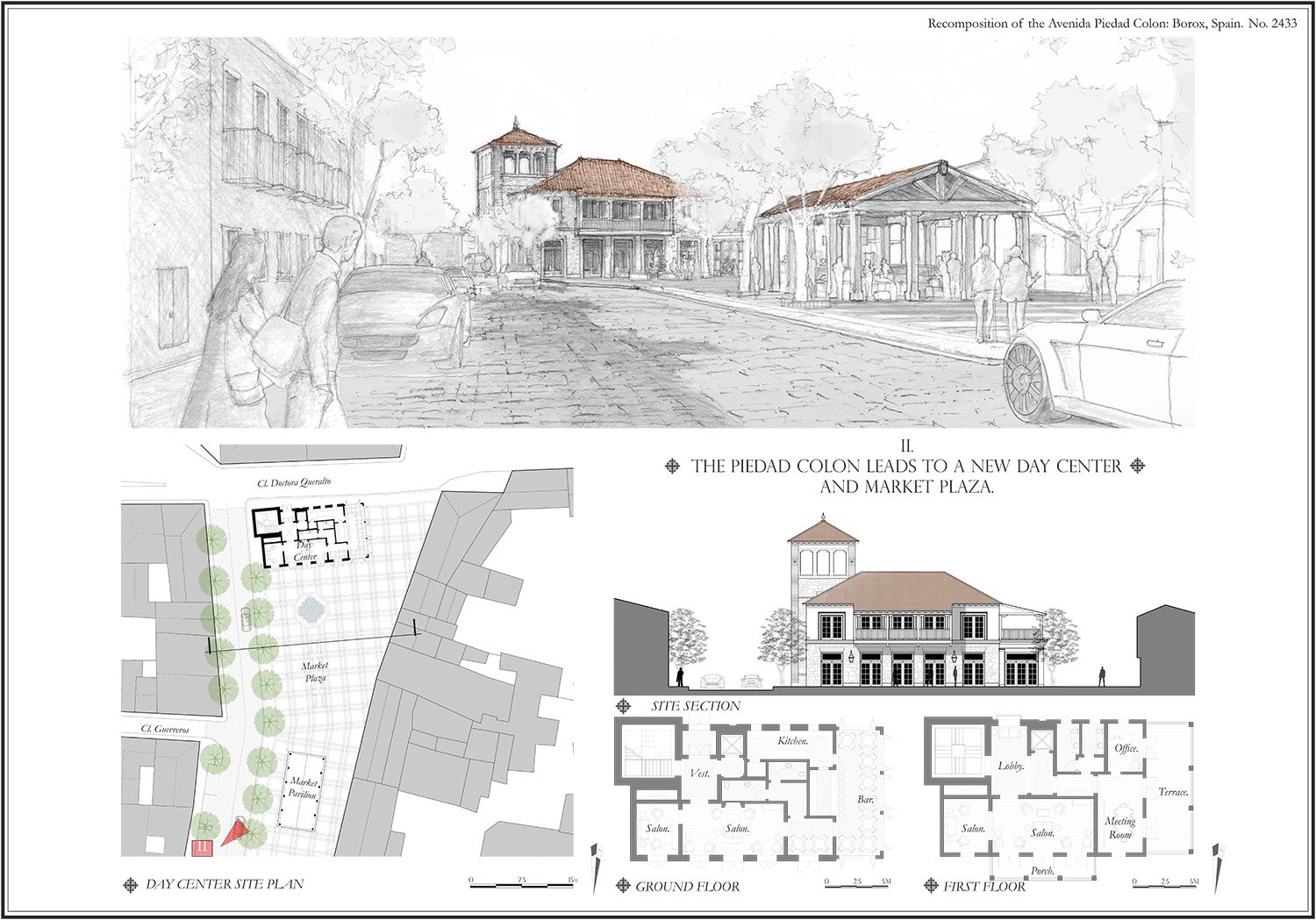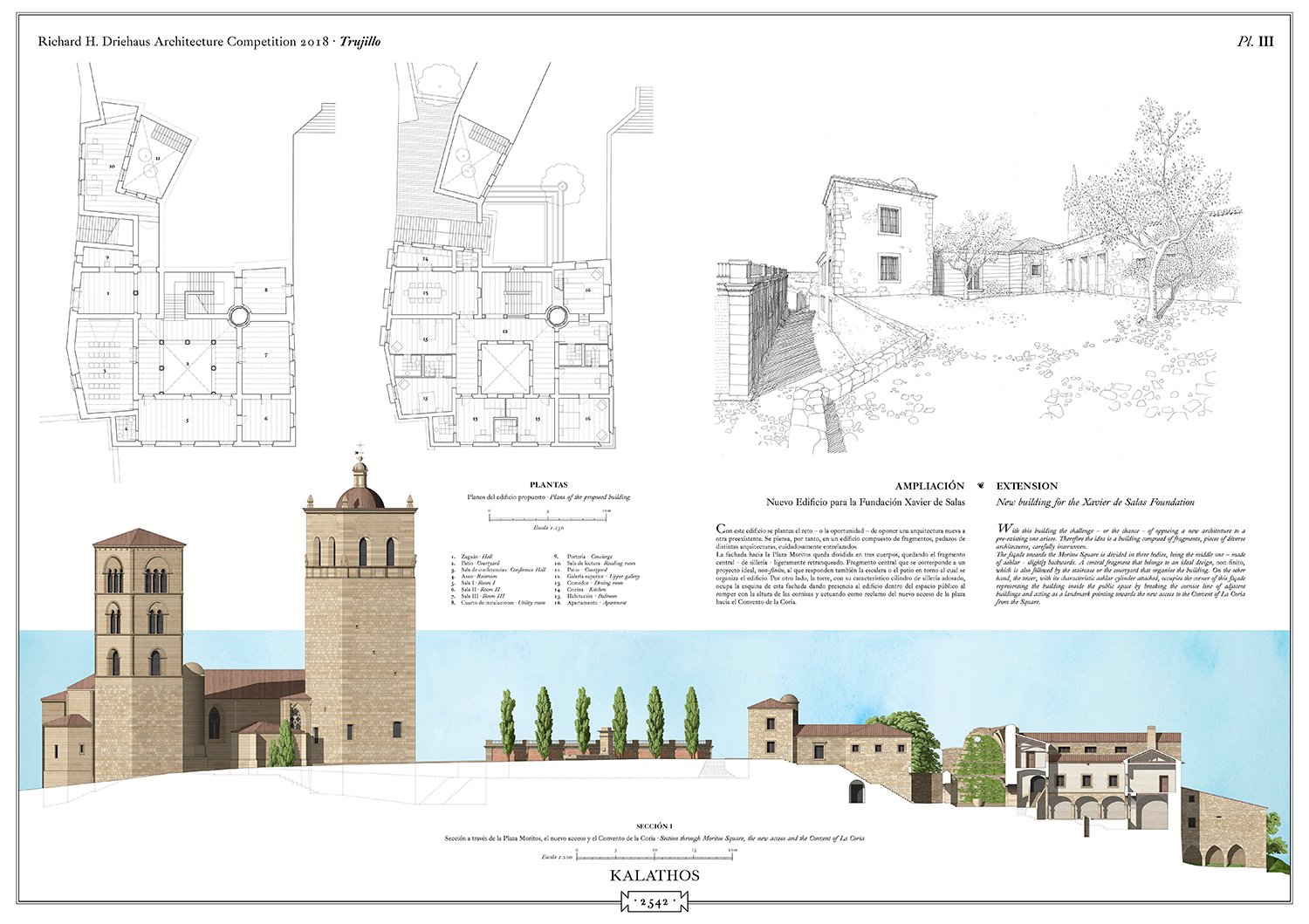2017-2018 Edition

FIRST PRIZE: AGUA
Xavier Espinós Bermejo, Estefanía Fernández-Cid Fernández-Viña, Lucía Espinós Bermejo and Rodrigo Toro Sánchez
The winning proposal, awarded with 12.000€, has been the one developed by the team of architects composed by Estefania Fernandez-Cid Fernández-Viña, Xavier Espinos Bermejo, Lucia Espinos Bermejo, and Rodrigo Toro Sanchez, who, last year, had already obtained an honourable mention for their project for Grajal de Campos.
HONOURABLE MENTIONS
Due to the high quality of the rest of the proposals, the jury also awarded three honourable mentions, 2.000€-worth each. The three projects, all of which of great beauty, also aimed to retrieve the place’s memory, returning its values to the heritage of the area, keeping alive the footprint of its history.
“Raíces” (Roots)
Victor Guimerá Millán and María del Pilar Rama Lara
“Azarbe”
Pablo Ibáñez Sánchez, Noemi Serrano Garrido, Ángel Vallecillo Zorrilla and Juan Bachs Rubio
“Carmen del Caz”
Luis León Ortiz, Álvaro López Camino, Adrián Marmolejo Clarhed, Daniel Usero Guerrero and colaborators

FIRST PRIZE: Uniting the City
Patrick Alles, Matthew Blumenthal and Megan Zhang
The jury decided to award the first prize, totalling 12.000€, to the north-American team composed by Patrick Alles, Matthew Blumenthal and Megan Zhang because of their proposal being the one which best solved the needs of the area at an urban scale.
HONOURABLE MENTIONS
The jury also awarded three honourable mentions, 2.000€-worth each. These three projects also suggested developing proposals which were very attractive and sensitive in terms of taking into account traditional shapes, local materials and the work of the artisans in the area.
“Bosque de Ribera” (Riverbank Woodland)
Elena Jiménez Sánchez and Abelardo Linares del Castillo-Valero
“Retrieving our civil reign”
“Entre la Piedra y el Agua” (Between the Stone and the Water)
Sara Martínez Sánchez and Maribal González Arjona

FIRST PRIZE: “PLURIBUS UNUM”
Abelardo Linares del Castillo Valero and Elena Jiménez Sánchez
The jury has decided to award the first prize, totalling 12.000€, to the proposal titled “Pluribus Unum”, designed by the architects from Seville Abelardo Linares del Castillo-Valero and Elena Jimenez Sanchez, who were also awarded an honourable mention for their proposal for Borox.
HONOURABLE MENTION
Even though honourable mentions were not contemplated at first for this location – since the design competition was exceptionally reconvened thanks to the help and interest of Jaca’s Town Council itself -, the jury decided to highlight one of the proposals even if it was not awarded with any sort of economic compensation. It highlighted the project of the square proposal titled “Plaza de Santiago” which was highly appreciated by the jury and was developed by the architecture studio Fairfax & Sammons Architects.
“Plaza de Santiago”

FIRST PRIZE: “KALATHOS”
Aritz Díez Oronoz and Imanol Iparraguirre Barbero
The winning proposal selected by the jury, awarded with 12.000€, was the one under the title “Kalathos”, by the architects from the Basque Country Aritz Diez Oronoz and Imanol Iparraguirre Barbero, who also won the first prize of this competition in the 2016-2017 call with their proposal for Grajal de Campos.
HONORABLE MENTIONS
The jury, composed by representatives of the diverse collaborating institutions as well as Alberto Casero the mayor of Trujillo, awarded three honourable mentions, 2.000€-worth each to the following proposals:
“Narrativas Pétreas” (Stone Narratives)
Juan Moya and his collaborators Sara Lobón Ruiz and Victor Jesús Sequí Sánchez
“Secuencias” (Secuences)
Francisco Ibáñez Sánchez, Elena Morales Muñoz, María Zurita Elizalde and Aida Caballero Sánchez
“Bosque de Piedra” (Stone Woodland)
Fernando Enríquez Martín and Manuel Viola Nevado
It was published on the occasion of the Richard H. Driehaus Architecture Competition and the Richard H. Driehaus Building Arts Awards 2018 Ceremony, as well as the inauguration of the Traditional New Architecture Exhibition in which were showed the works of the winners in both initiatives from June 13 to July 26, 2018 in the Arquería de los Nuevos Ministerios in Madrid.
This publication will present the results of the 2018 Richard H. Driehaus Architecture Competition and Richard H. Driehaus Building Arts Awards. Both competitions are organized by INTBAU (the International Network for Traditional Building, Architecture and Urbanism), thanks to the collaboration of the Department of Building and Architecture of the Ministry of Public Works and Infrastructure, the Department of Beaux Arts and Cultural Heritage of the Ministry of Culture and Sports, the Rafael Manzano Prize and the Council of Architecture Institutes of Spain.
Award Ceremony and Exhibition New Traditional Architecture 2018
On Wednesday, June 13th 2018, the Richard H. Driehaus Architecture Competition and the Building Arts Awards laureates were presented at the Arquería of Nuevos Ministerios (Madrid).
The event was chaired by Francisco Javier Martín Ramiro, Deputy Director of the Ministery of Public Works and Infraestructure, Richard H. Driehaus, Harriet Wennberg, INTBAU Senior Manager, Laureano Matas, Secretary of the Council of Architecture Institutes of Spain and Alejandro García Hermida, coordinator and chairman of the jury of the both initiatives .
In the same venue it was inaugurated the exhibition “New Traditional Architecture 2018” showing the works of the winners until July 26th.
Video of the Award Cermony
Lectures on Awarded Projects
The authors of the awarded projects on the first edition of the Richard H. Driehaus Architecture Competition, presented their proposals during the Architecture and Place Making international Seminar, hold in the Universidad Politécnica de Madrid School of Architecture (ETSAM) on November 7th – 8th, 2017. This Seminar is organized by INTBAU (International Network for Traditional Building, Architecture and Urbanism) and the Rafael Manzano Prize of New Traditional Architecture, with the collaboration of the Universidad Politécnica de Madrid, the Universidad Alfonso X el Sabio, the Escola Superior Gallaecia, the Fundação Serra Henriques and the Centro de Investigación de Arquitectura Tradicional (CIAT).











































































